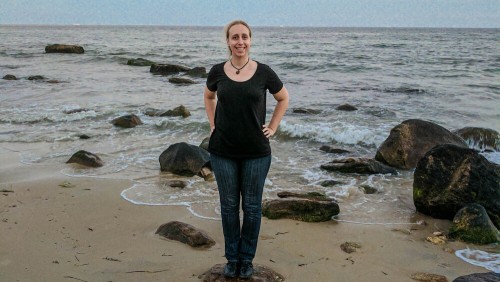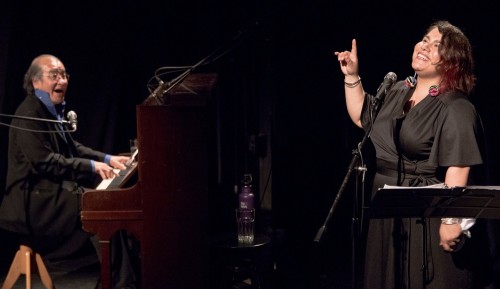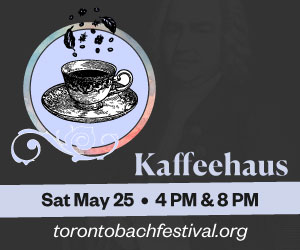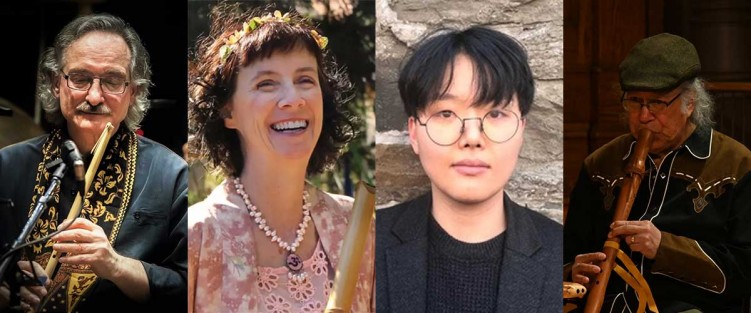 It is often said that music has a special power to bring diverse people and cultures together. Two events in July occurring just two days apart highlight this truth – one local, one international.
It is often said that music has a special power to bring diverse people and cultures together. Two events in July occurring just two days apart highlight this truth – one local, one international.
North Wind: On July 16 at Toronto’s Heliconian Hall, North Wind Concerts is bringing together four Toronto-based musicians – each playing different types of wood or bamboo flutes – onto the same stage, for a concert titled “Encircling the World: Flutes II” part of an ongoing series. Combining flutes from Korea (the daegeum played by Jin Cho), from Japan (the shakuhachi played by Debbie Danbrook), from the Anishinaabeg First Nation (the pipigwan played by Rene Meshake), and from Indonesia (the suling played by Andrew Timar), the focus will be on an exchange of musical ideas and approaches to performance.
As artistic co-director Alison Melville explained to me, although many efforts have been made over the past 20 years by classical music organizations to stretch thematically beyond the boundaries of the European tradition, not much has changed when it comes to drawing in new audiences. “There’s something more fundamental that has to happen,” she said.
One key ingredient often missing is a primary focus on the music itself. How do people from different cultural backgrounds actually approach playing the music, and when, and why? “What instruments do you play that are like mine? If I listen to the way you play your instrument, how can that inform me about how one plays music, and even in understanding what music is?” Even though different fundamental techniques may be used when it comes to different wind instruments, exploring common elements, such as how to play with air, for example, can be informative. Regarding drawing in new audiences, people familiar with the music of their own culture are more likely to attend a concert such as “Encircling the World: Flutes II”; in so doing, they will be exposed to other approaches to music-making, traditions that they otherwise wouldn’t experience.
During the concert, each of the four players will play their own set, combining their performance with stories about their relationship to the instrument and their approaches to music-making. These sets will be followed by the four performers coming together in different combinations either to improvise or to perform something preplanned.
The evening will end with a chance for conversation with the audience. Melville pointed out, for example, that two of the performers are playing instruments different from the cultural heritage they were raised in. An interesting question to think about is why they made that choice, and what it has meant to them to pursue a career on that particular instrument.
World Listening Day
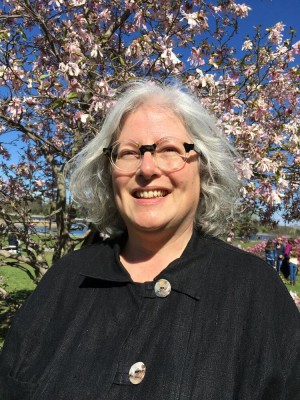 July 18 is World Listening Day (WLD), a date chosen to honour the birthday of R. Murray Schafer and his pioneering efforts in sound ecology. The event is coordinated annually by the World Listening Project; in 2022, the selected theme is Listening Across Boundaries, a focus that resonates with the Encircling the World event two days previously.
July 18 is World Listening Day (WLD), a date chosen to honour the birthday of R. Murray Schafer and his pioneering efforts in sound ecology. The event is coordinated annually by the World Listening Project; in 2022, the selected theme is Listening Across Boundaries, a focus that resonates with the Encircling the World event two days previously.
WLD is an invitation: for people from many countries and differing soundscapes both to listen to the sounds of nature and to explore the practice of field recording. That such a day exists highlights how the practice of listening is an important component in understanding each other and the world around us.
This year’s theme was suggested by marine biologist and sound artist Dr. Heather Spence from Washington D.C., who is challenging participants to offer works that ask us to be more inclusive in the way we listen. Sound artists, composers, performers and other interested individuals are invited to submit their events: these will be compiled and made available on July 18 for 24 hours of livestreamed listening adventures on the World Listening Project website.
NAISA: Locally, New Adventures in Sound Art (NAISA) is presenting their own online WLD event on July 17 with audio and audio-visual creations made by hearing and deaf musicians interpreting Ellen Waterman’s text score, Bodily Listening in Place. This concert was preceded on June 19 and 26 by two preparatory workshops using improvisation and inter-sensory exercises that invited participants to explore listening with the whole body, using all their senses while improvising in response to the environment around them. The overall experience offers hearing and deaf musicians the opportunity to learn from each other while reminding all of us that musical experiences need to include ways of listening for all kinds of bodies.
And speaking of resonances
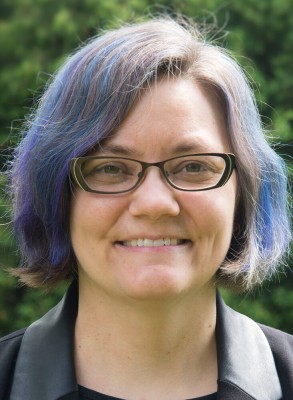 Once I discovered the particular resonance between the Northwinds, WLD and NAISA events described in this story, I started to notice echoes of one or another aspect of it all around me. Here are four that caught my eye – or should that be ear?
Once I discovered the particular resonance between the Northwinds, WLD and NAISA events described in this story, I started to notice echoes of one or another aspect of it all around me. Here are four that caught my eye – or should that be ear?
July 10 at Westben, a 13-piece chamber pop ensemble The Queer Songbook Orchestra;
July 13 at Brantford Summer Music Tomson Highway - Songs in the Key of Cree, Cree-Canadian playwright, storyteller, composer and performer Tomson Highway, with singer Patricia Cano;
August 1, Music Mondays, Where the Creator Rests, a collaboration
with Métis composer, Karen Sunabacka and the Andromeda Trio;
Sept 1-5, Intersection Music and Arts Festival in Yonge Dundas Square - an annual multi-day festival that celebrates musical experimentation.
Wendalyn Bartley is a Toronto-based composer and electro-vocal sound artist. sounddreaming@gmail.com.


